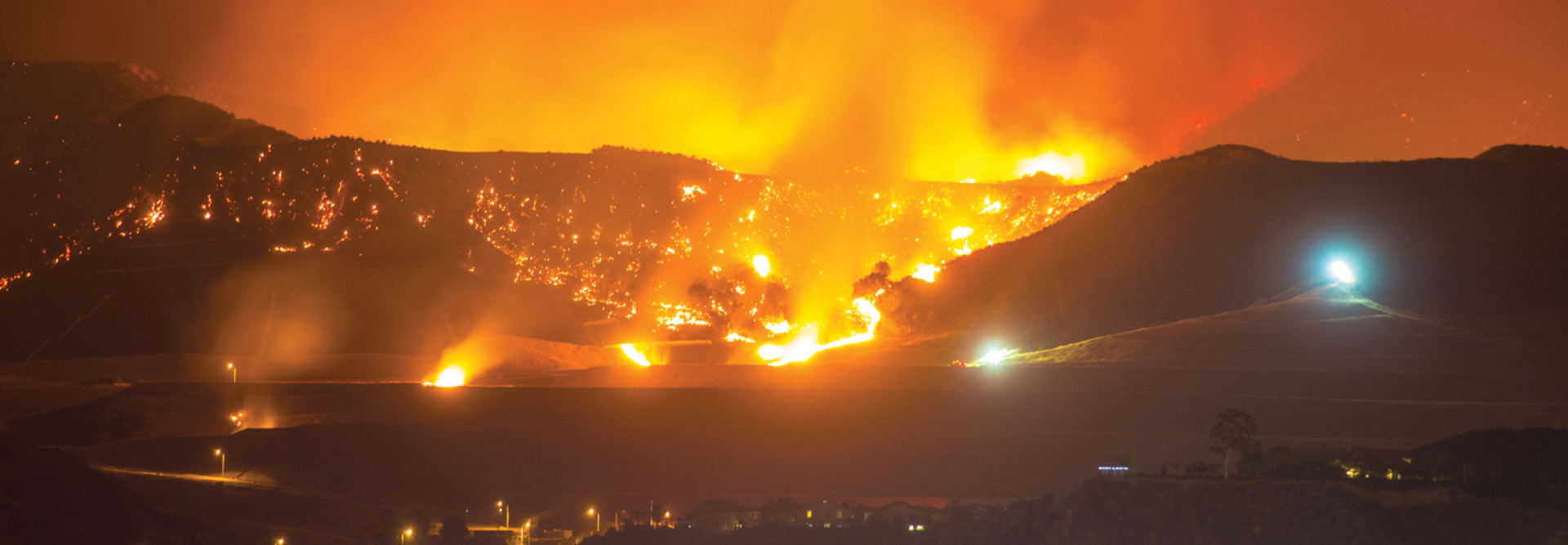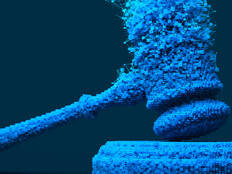How Are Drones Used in Firefighting?
Drones have been used for several years to help combat fires. A key function of drones in the firefighting context is that they provide situational awareness to commanders during what are inherently chaotic situations.
“Fires generate heat that can have a major impact on local wind/weather conditions,” Xiaolin Hu, director of Georgia State University’s Systems Integrated Modeling and Simulation lab, tells the U.S. Department of Agriculture. “The constant interaction between fire and atmosphere causes dynamic and local changes in wind speed and direction that are not predicted well by standard weather models or expert judgment. The real time data collected by [drones] can help firefighters by providing fire location and fire spread information — and issue an ‘early warning’ to firefighters if they are in danger.”
Drones can fly long ranges and, equipped with high-definition cameras, thermal imaging sensors and other equipment, they can provide a real-time view of fires on the ground and how they are spreading. That, in turn, can help commanders make more informed decisions about how to respond.
A NASA blog post notes that drones are useful tools for “capturing thermal images of the landscape below,” and those heat signatures “can help determine where firefighters should establish fire-containment lines, dug either by bulldozer or by hand.”
EXPLORE: What is the future of autonomous drones in public safety?
As a blog post from drone company DJI adds that, in addition to help firefighting agencies gain situational awareness, drones can help protect personnel, enable fast mapping for incident response and post-incident recovery, and help ignite controlled burns to stop fires.
Drones can also help fight fires in urban environments. The Los Angeles Fire Department has been using drones since 2015, and they have helped improve situational awareness for commanders.
“For example, the LAFD frequently receives calls about lost or injured hikers in the Hollywood Hills,” another DJI blog post notes. “[Search and rescue] missions of this kind usually require helicopters, ambulances, and other emergency resources. However, with a drone at hand, operation teams can deploy swiftly, acquiring visuals and thermal imagery instantly and to allocate resources effectively.”
And, as the New York City Fire Department’s experience shows, drones can also help monitor firefighters as they are entering and while inside burning buildings.
DIVE DEEPER: Drones create 3D maps of bridges and other critical infrastructure.
Fire Technology Intersects with Drones
AI and data analytics technology are being combined with drones to improve situational awareness for firefighters. Rick Stratton, a fire analyst at the U.S. Forest Service, tells the Thomson Reuters Foundation that researchers have been able to create AI models that provide new layers of data that build on the institutional knowledge of local firefighters.
“Firefighters only see so much, their careers are short — but now we can model thousands of artificial seasons and pull all sorts of insights,” Stratton says. He operates an online dashboard that allows fire departments to get analytics of their terrain in real time.
“We wouldn’t have been able to do that 15 years ago,” he says. “We didn’t have the computer power.”
Drones are combining with firefighting technology in other novel ways. As The Hill reports, Carrick Detweiler, CEO of Drone Amplified and a professor at the University of Nebraska–Lincoln, has developed a drone technology that drops balls of chemicals to create targeted fires at night. The system “allows firefighters for the Forest Service and Bureau of Land Management to fly at night and in heavy smoke using thermal imagery.”
Thermal imaging can also help battle fires closer to where people live. A prototype autonomous drone called the Prophet, developed by Marius Kindler at the Umea Institute of Design, can monitor and assess structures on fire so that fire departments and other emergency responders can react effectively.
The drone is equipped with an infrared camera to capture a heat map, helping rescuers detect the source of fire and how hot portions of a structure are. The drone can also help predict anomalies and can be linked with other drones to share situational awareness.
RELATED: How can deployable operations centers aid in disaster response?
AI Firefighting Technology Is Advancing
Artificial intelligence technology is advancing and being used by those fighting fires. An AI-based tool known as the Potential Control Locations algorithm “uses machine learning to suggest where firefighters should place their control lines during a blaze,” as the Thomson Reuters article explains.
“It’s very data hungry,” Chris Dunn, an Oregon State University forestry researcher, says. “It takes into account distances from roads, where there are ridges and flat ground, what kind of fuel is present on the ground, and it samples historical fire perimeters too.”
Other researchers are also bringing AI to bear to help fight fires. Andre Coleman, who leads a team of researchers at the Pacific Northwest National Laboratory, worked with the Department of Homeland Security to create a system in 2014 called Rapid Analytics for Disaster Response, or RADR, as NBC News reports.
RADR “uses image-capturing technology from satellites, aircraft, drones, artificial intelligence and cloud computing to assess the impact of natural disasters, including wildfires,” NBC notes.
Instead of waiting for satellites to transmit images, which can take hours, a fire-focused version of the tool can “reveal wildfire boundaries multiple times a day and link impact and risk to structures, substations and other critical infrastructure in the landscape,” according to NBC.
Combining technologies to provide real-time situational awareness is critical to containing wildfires. Any tool that can cut down response times and improve and hasten decision-making is of vital importance during a fast-moving situation such as a fire.
“Coordination can be challenging,” Coleman says. “This can help with evacuation routes to help understand where search and rescue needs to go.”
Meanwhile, researchers at the New Jersey Institute of Technology and Israel’s Ben-Gurion University are looking into how AI-enabled drones could communicate with firefighters on the scene of fires so that they can be more efficient and save more lives, an NJIT post reports.
“I am excited to explore how one of our fastest evolving technologies, AI-enabled drones, can be a game changer to help firefighters quickly find victims over a large area where visibility or other accessibility issues may give drones an advantage over humans,” Yvette Wohn, associate professor of informatics at NJIT’s Ying Wu College of Computing, says in the NJIT post.
“Human firefighters will always be essential for the actual rescue, but the drone may be able to deliver essential resources or be used as a vehicle to perform essential communication functions so that the victim can receive the best attention until they are able to be transported out of the situation.”











